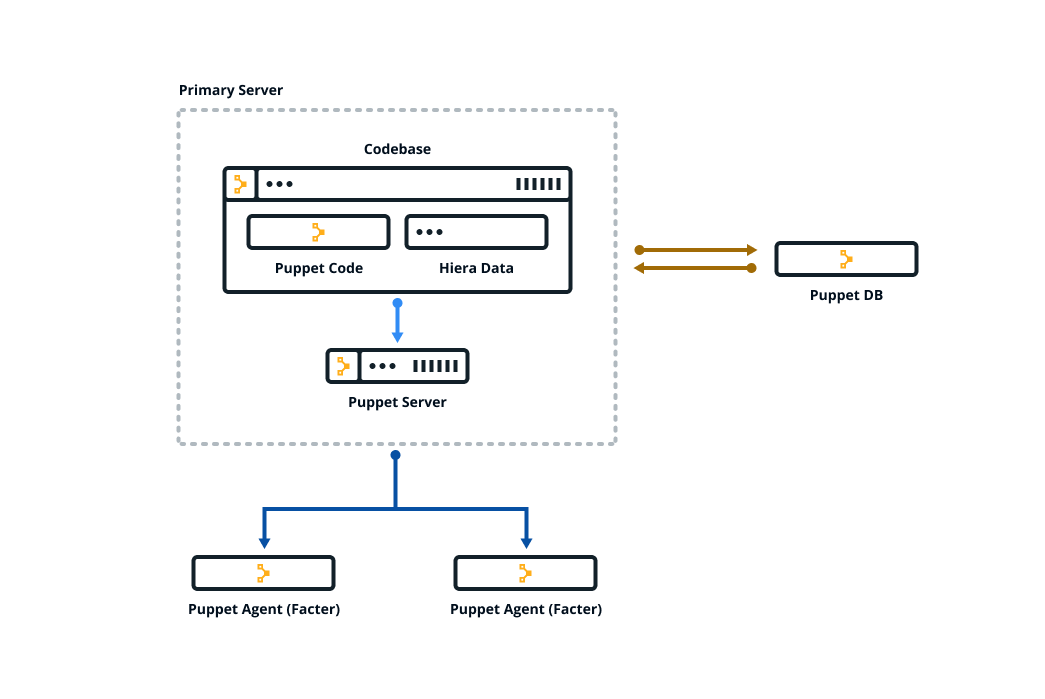The Puppet platform
Puppet is made up of several packages. Together these
are called the Puppet platform, which is what you use to
manage, store and run your Puppet code. These packages
include puppetserver, puppetdb, and puppet-agent — which includes
Facter and Hiera.
Puppet is configured in an agent-server architecture, in which a primary node (system) controls configuration information for one or more managed agent nodes. Servers and agents communicate by HTTPS using SSL certificates. Puppet includes a built-in certificate authority for managing certificates. Puppet Server performs the role of the primary node and also runs an agent to configure itself.
Facter, Puppet’s inventory tool, gathers facts about an agent node such as its hostname, IP address, and operating system. The agent sends these facts to the primary server in the form of a special Puppet code file called a manifest. This is the information the primary server uses to compile a catalog — a JSON document describing the desired state of a specific agent node. Each agent requests and receives its own individual catalog and then enforces that desired state on the node it's running on. In this way, Puppet applies changes all across your infrastructure, ensuring that each node matches the state you defined with your Puppet code. The agent sends a report back to the primary server.
You keep nearly all of your Puppet code, such as manifests, in modules. Each module manages a specific task in your infrastructure, such as installing and configuring a piece of software. Modules contain both code and data. The data is what allows you to customize your configuration. Using a tool called Hiera, you can separate the data from the code and place it in a centralized location. This allows you to specify guardrails and define known parameters and variations, so that your code is fully testable and you can validate all the edge cases of your parameters. If you have just joined an existing team that uses Puppet, take a look at how they organize their Hiera data.
All of the data generated by Puppet (for example facts, catalogs, reports) is stored in the Puppet database (PuppetDB). Storing data in PuppetDB allows Puppet to work faster and provides an API for other applications to access Puppet's collected data. Once PuppetDB is full of your data, it becomes a great tool for infrastructure discovery, compliance reporting, vulnerability assessment, and more. You perform all of these tasks with PuppetDB queries.
The diagram below shows how the Puppet package components fit together.
